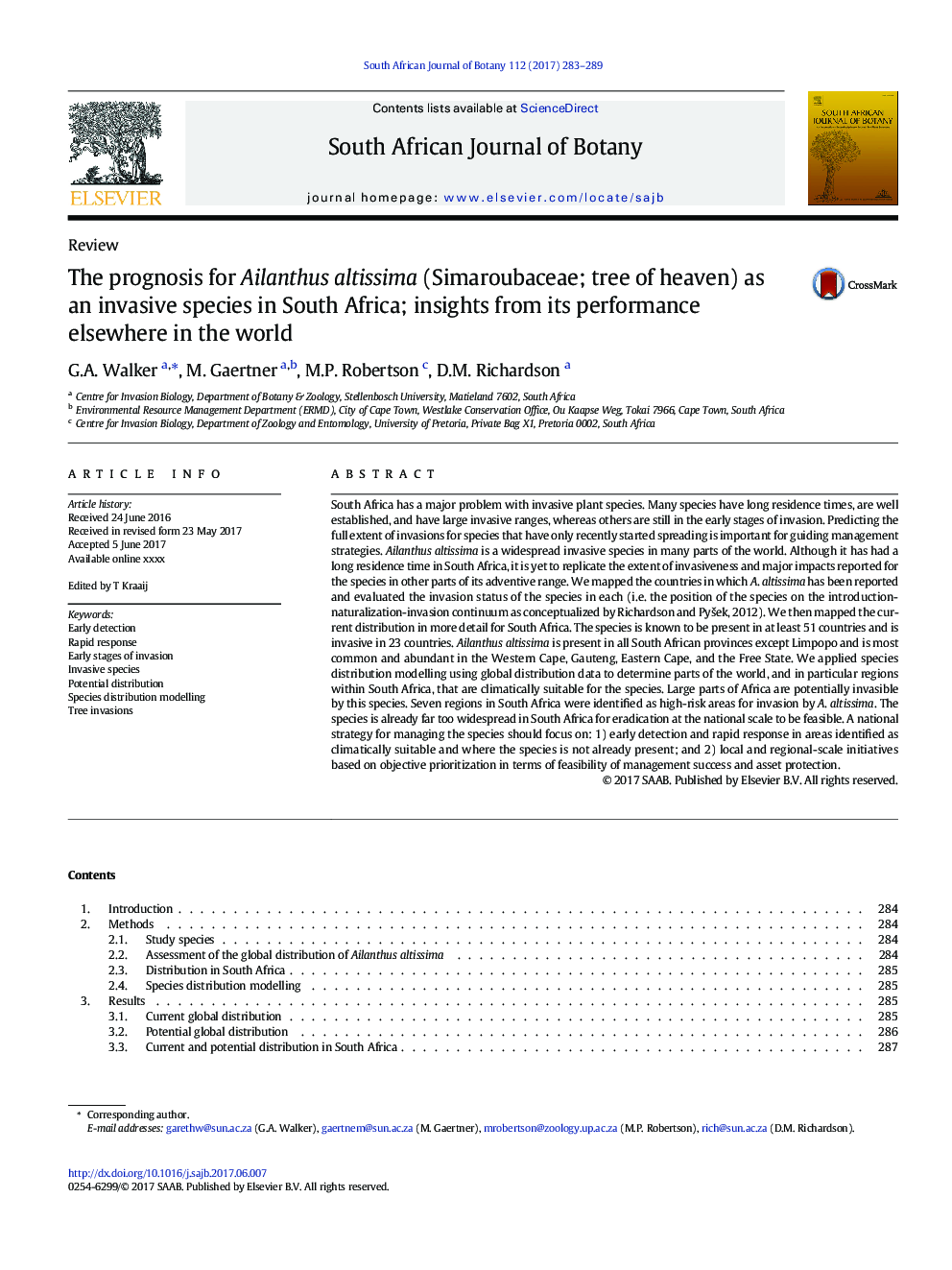| کد مقاله | کد نشریه | سال انتشار | مقاله انگلیسی | نسخه تمام متن |
|---|---|---|---|---|
| 5763156 | 1625146 | 2017 | 7 صفحه PDF | دانلود رایگان |
عنوان انگلیسی مقاله ISI
The prognosis for Ailanthus altissima (Simaroubaceae; tree of heaven) as an invasive species in South Africa; insights from its performance elsewhere in the world
دانلود مقاله + سفارش ترجمه
دانلود مقاله ISI انگلیسی
رایگان برای ایرانیان
کلمات کلیدی
موضوعات مرتبط
علوم زیستی و بیوفناوری
علوم کشاورزی و بیولوژیک
علوم زراعت و اصلاح نباتات
پیش نمایش صفحه اول مقاله

چکیده انگلیسی
South Africa has a major problem with invasive plant species. Many species have long residence times, are well established, and have large invasive ranges, whereas others are still in the early stages of invasion. Predicting the full extent of invasions for species that have only recently started spreading is important for guiding management strategies. Ailanthus altissima is a widespread invasive species in many parts of the world. Although it has had a long residence time in South Africa, it is yet to replicate the extent of invasiveness and major impacts reported for the species in other parts of its adventive range. We mapped the countries in which A. altissima has been reported and evaluated the invasion status of the species in each (i.e. the position of the species on the introduction-naturalization-invasion continuum as conceptualized by Richardson and Pyšek, 2012). We then mapped the current distribution in more detail for South Africa. The species is known to be present in at least 51 countries and is invasive in 23 countries. Ailanthus altissima is present in all South African provinces except Limpopo and is most common and abundant in the Western Cape, Gauteng, Eastern Cape, and the Free State. We applied species distribution modelling using global distribution data to determine parts of the world, and in particular regions within South Africa, that are climatically suitable for the species. Large parts of Africa are potentially invasible by this species. Seven regions in South Africa were identified as high-risk areas for invasion by A. altissima. The species is already far too widespread in South Africa for eradication at the national scale to be feasible. A national strategy for managing the species should focus on: 1) early detection and rapid response in areas identified as climatically suitable and where the species is not already present; and 2) local and regional-scale initiatives based on objective prioritization in terms of feasibility of management success and asset protection.
ناشر
Database: Elsevier - ScienceDirect (ساینس دایرکت)
Journal: South African Journal of Botany - Volume 112, September 2017, Pages 283-289
Journal: South African Journal of Botany - Volume 112, September 2017, Pages 283-289
نویسندگان
G.A. Walker, M. Gaertner, M.P. Robertson, D.M. Richardson,